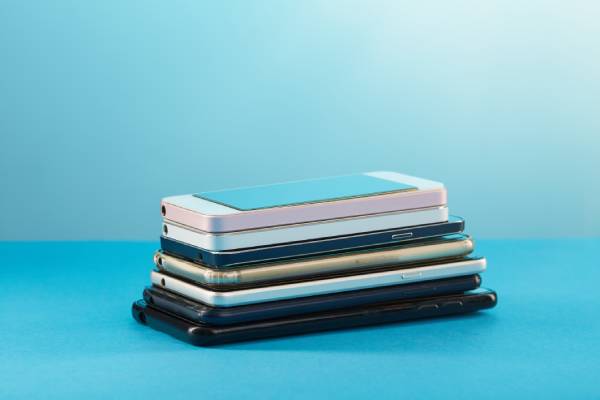
Amid new tariffs and rising trade tensions, the Trump administration has revived a familiar demand: Bring iPhone manufacturing home.
Speaking at a press conference earlier this week, White House Press Secretary Karoline Leavitt said, “Absolutely. [Trump] believes we have the labor, we have the workforce, we have the resources to do it.” She pointed to Apple’s recently announced $500 billion U.S. investment as evidence that domestic manufacturing is viable.
But a closer look inside the iPhone reveals just how globally interconnected its production process is — and why reshoring the entire operation would be more complicated than it sounds.
A Phone for the World
Apple’s supply chain spans over 50 countries and supports over 3 million people. While the iPhone is designed in California, nearly every major component is manufactured abroad. Here’s a look at some of the key components inside an iPhone, based on publicly available data about Apple’s suppliers and product parts.
| Component | Supplier(s) | Country/Region |
|---|---|---|
| Processor (A-series) | Apple (Design) / TSMC (Manufacture) | USA / Taiwan |
| Display | Samsung, LG | South Korea |
| Flash Memory | Toshiba, Samsung, Kioxia | Japan, South Korea |
| DRAM | Kioxia | Japan |
| Glass (Gorilla Glass) | Corning | USA, Taiwan, Japan |
| Battery | Samsung, Sunwoda | South Korea, China |
| Camera | Sony | Japan |
| Audio Chips | Cirrus Logic | USA |
| Cellular Networking / 5G Modem | Qualcomm | USA |
| Compass | AKM Semiconductor | Japan |
| Wi-Fi Module | Murata, USI | Japan, China |
| LiDAR Scanner | Sony | Japan |
| Microcontroller with eSIM | STMicroelectronics | Switzerland |
| DisplayPort Interface | NXP Semiconductors | Netherlands |
| Wireless Charging Receiver | Broadcom | USA |
| Final Assembly | Foxconn, Pegatron, Luxshare ICT, Tata | China, India, Vietnam |
Note: Apple sources components from multiple suppliers depending on the model and year. This chart represents the most common suppliers for recent iPhone models and is not exhaustive.
Even Apple’s glass supplier, Corning, while headquartered in the U.S., maintains production facilities in Taiwan and Japan to support the iPhone’s large-scale demand.
It’s Not Just About Cheap Labor
Calls to move iPhone production to the U.S. aren’t new. More than a decade ago, Steve Jobs told then-President Obama that it wasn’t about labor costs — it was about skill shortages. “You can’t find that many [engineers] in America to hire,” Jobs said, referring to the 30,000 engineers needed to support a factory workforce of 700,000 in China.
Tim Cook echoed those sentiments in 2017. “The reason [Apple is in China] is because of the skill and the quantity of skill in one location, and the type of skill… In the U.S., you could have a meeting of tooling engineers, and I’m not sure we could fill the room — in China, you could fill multiple football fields.”
What Apple’s $500 Billion Investment Looks Like
The Trump administration has cited Apple’s latest pledge to invest $500 billion in the U.S. as proof that onshoring iPhone production is possible. But the company’s February 24 press release makes clear that the spending covers a wide range of initiatives, including:
- Building out AI-focused data centers
- Expanding Apple TV+ production in 20 states
- A new Advanced Manufacturing Fund with $10 billion
- A manufacturing plant in Texas for AI-tuned servers
- A manufacturing academy in Michigan
Nowhere in the release does Apple suggest full iPhone manufacturing will move to the U.S.
“We’re investing in American ingenuity, innovation, and manufacturing,” said Apple CEO Tim Cook in the press release. “We’re as committed as ever to investing across the country — from coast to coast — on a scale we’ve never done before.”